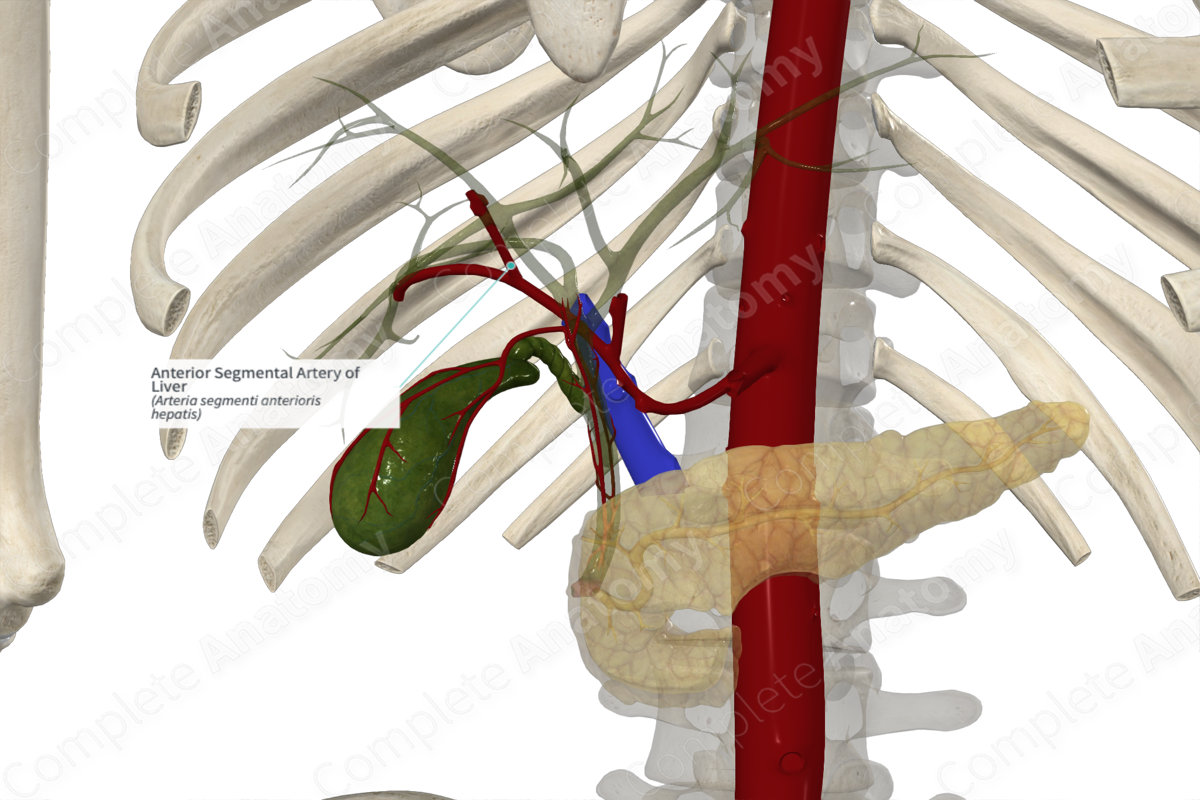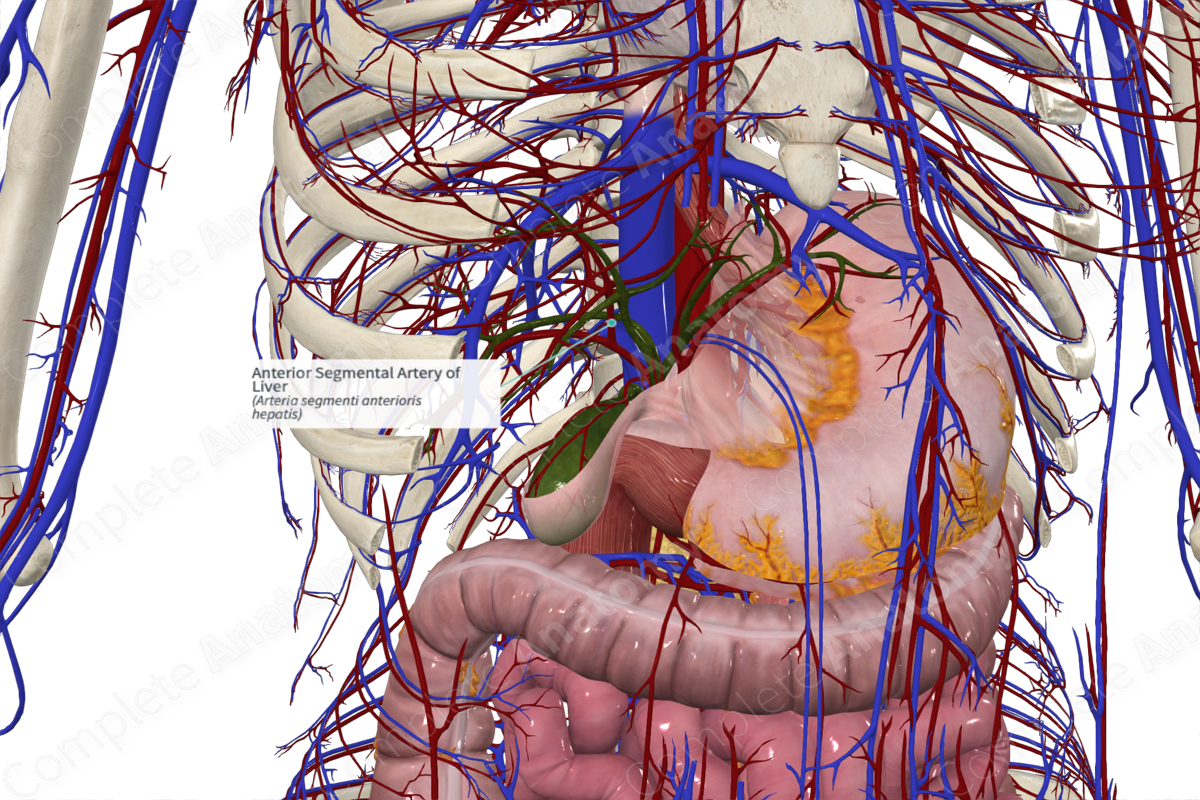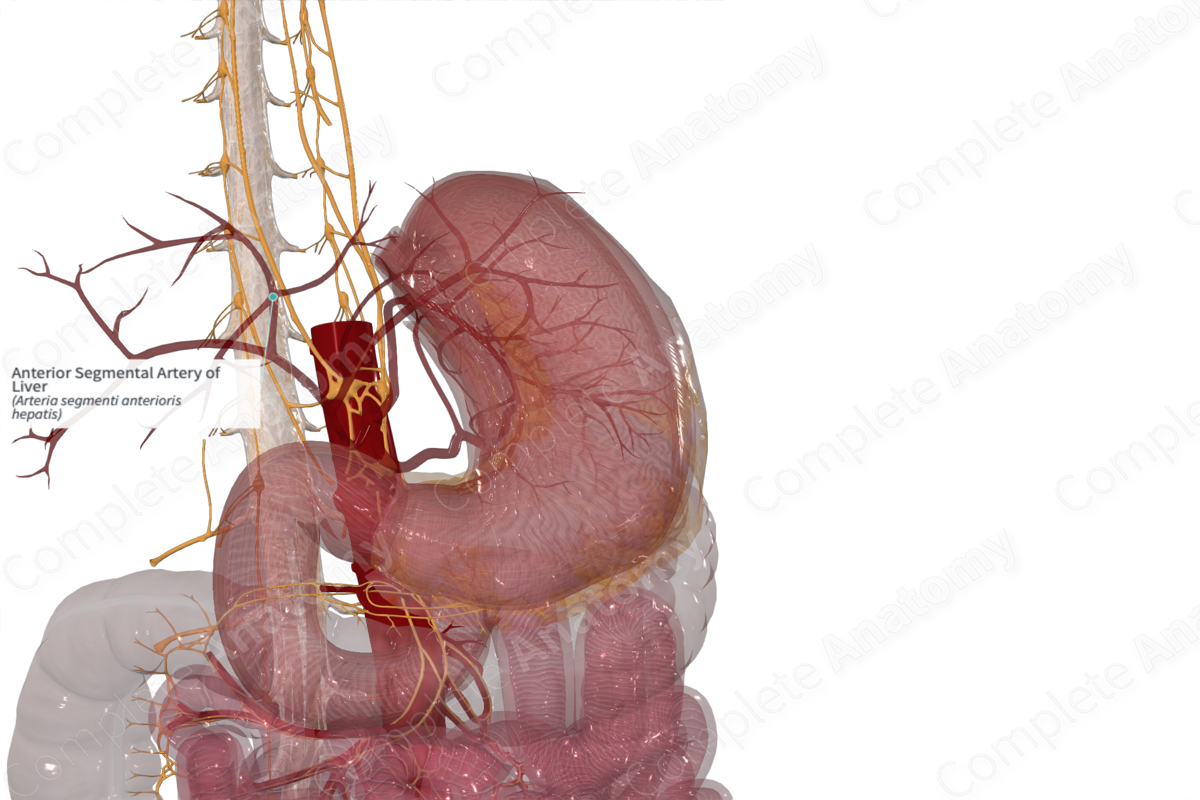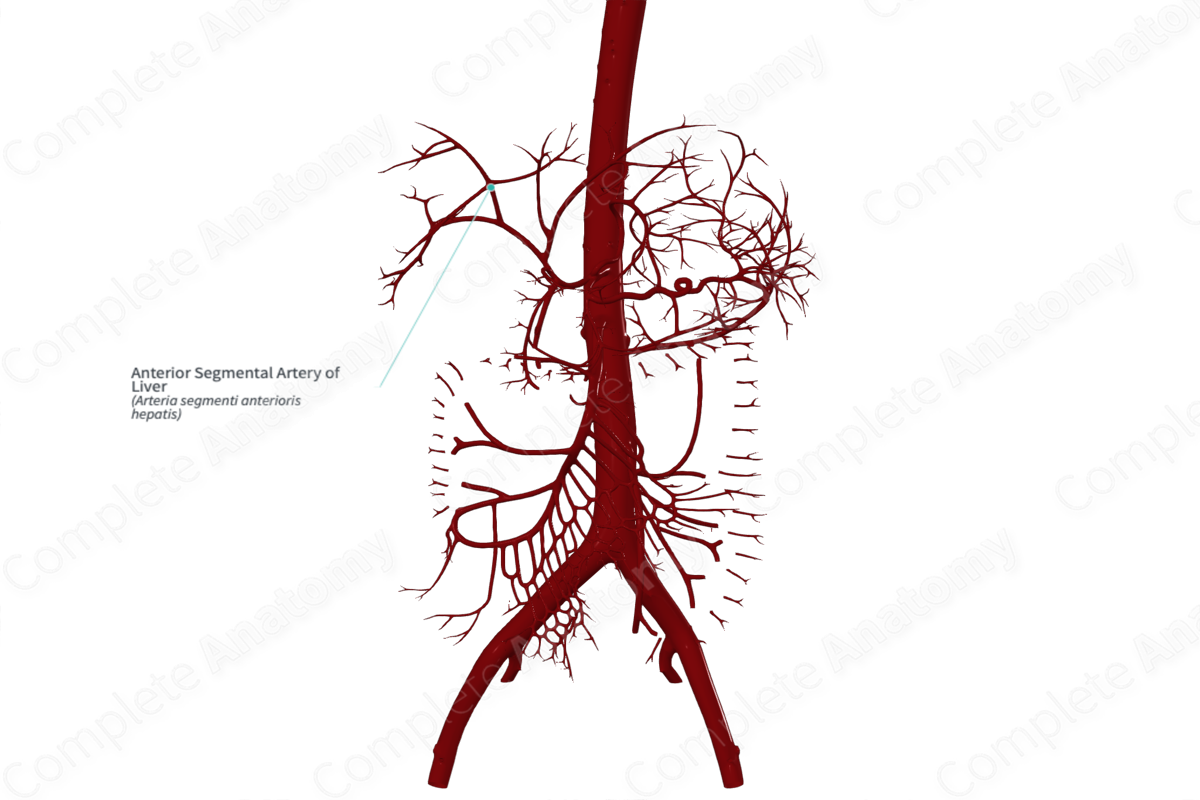
Anterior Segmental Artery of Liver
Arteria segmenti anterioris hepatis
Read moreQuick Facts
Origin: Right hepatic artery.
Course: Passes straight superiorly and to the right.
Branches: Segmental branch V and VIII.
Supplied Structures: Caudate lobe (Segment 1), Segments V and VIII of the liver.
Origin
The anterior segmental artery of the liver arises from the right hepatic artery.
Course
Typically, the right hepatic artery within the parenchyma of the right functional lobe of the liver quickly gives a side branch, then bifurcates into two terminal branches, one of which is the anterior segmental artery of the liver. It passes relatively straight, superior and to the right (Furuta et al., 2009).
Branches
The anterior segmental artery gives several segmental branches variably to Segment 1 (caudate lobe) and provides terminal branches to Segments V and VIII (Favelier et al., 2015).
Note that from the common hepatic artery to the terminal branches, the vasculature of the hepatobiliary system is extremely variable. What is given here is the most common arrangement. However, any surgeon operating in this area must first establish the branching pattern either radiographically or by exploration before ligating any vessel in this region.
Supplied Structures
The anterior segmental artery provides arterial supply to segment I (caudate lobe), segment V, and segment VIII of the liver (Favelier et al., 2015).
References
Favelier, S., Germain, T., Genson, P. Y., Cercueil, J. P., Denys, A., Krausé, D. and Guiu, B. (2015) 'Anatomy of liver arteries for interventional radiology', Diagn Interv Imaging, 96(6), pp. 537-46.
Furuta, T., Maeda, E., Akai, H., Hanaoka, S., Yoshioka, N., Akahane, M., Watadani, T. and Ohtomo, K. (2009) 'Hepatic Segments and Vasculature: Projecting CT Anatomy onto Angiograms', Radiographics, 29(7), pp. e37.
Learn more about this topic from other Elsevier products
Artery

Arteries are vessels transporting blood between heart, tissues, and other organs in order to supply them with nutrition and oxygen.



